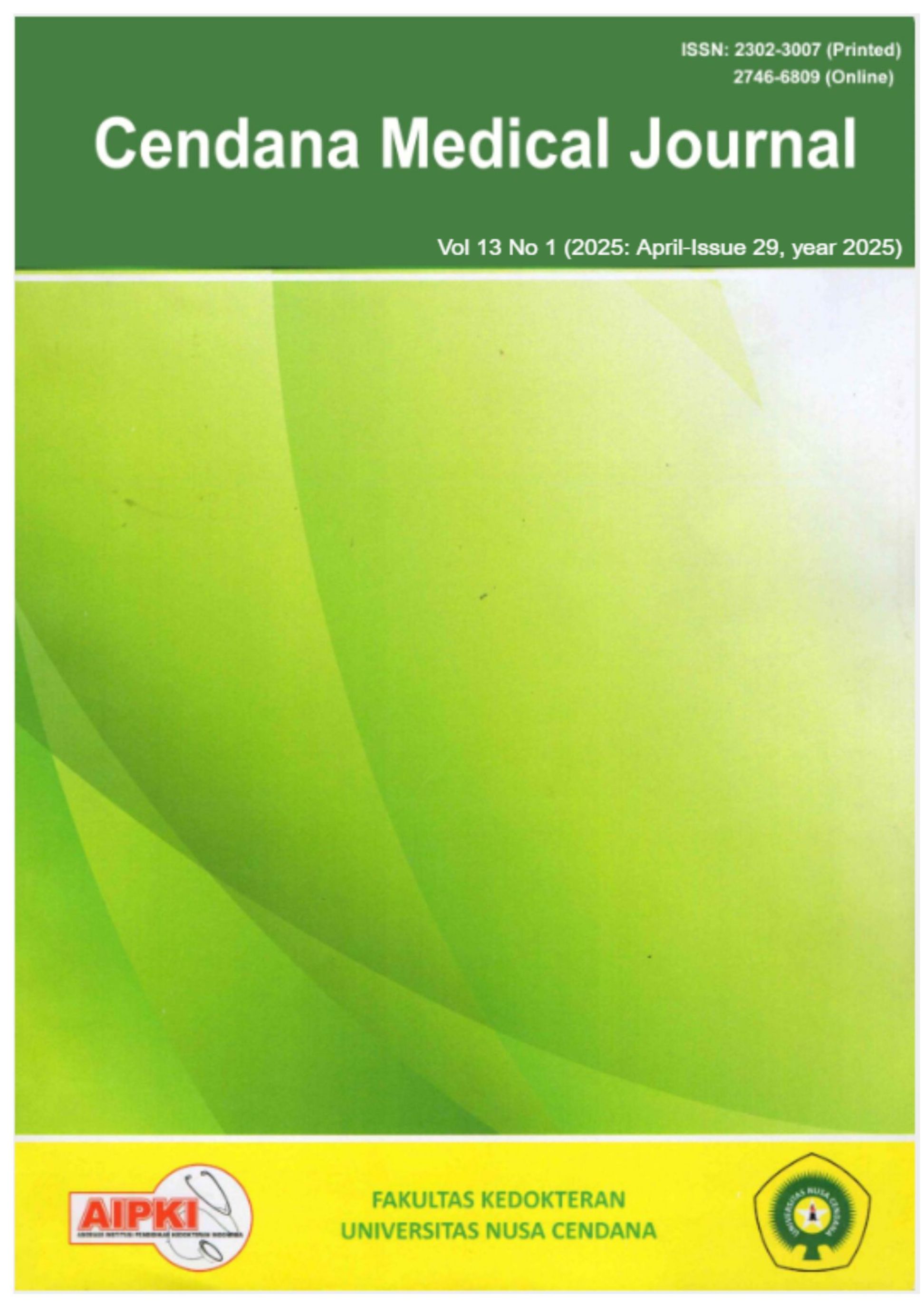Correlation Between Communication Anxiety and Student Participation in Problem-Based Learning at the Faculty of Medicine, Universitas Nusa Cendana
Hubungan Antara Tingkat Kecemasan Komunikasi dengan Keaktifan Mahasiswa dalam Problem Based Learning di Fakultas Kedokteran Universitas Nusa Cendana
Abstract
Background : Learning in medical faculty which has a stressfull environment will have negative effects and one of them is communication anxiety within students. Anxiety risks having a negative impact on students’ academic records, one of them in the form of PBL (Problem Based Learning) which emphasizes on tutorial based disscussions.
Goal : To identify the correlation between communication anxiety rates and students’ activities within PBL at Medical Faculty, Nusa Cendana University.
Method : This research is a quantitative research with a cohort prospective approach done on Medical Faculty Nusa Cendana University students class of 2019 by collecting PRCA-24 quesioners and PBL scores. Samples are gathered utilizing the simple random sampling with 43 respondants whom fullfill inclusive and exclusive requirements. The research was analyzed univaria-tly, bivariate-ly chi-square method.
Results: Research about the correlation between communication anxiety rates and student activeness in PBL obtained p-value = 0.092 (> ∝ = 0.05) and r = 0,249. This means that the communication anxiety rates does not always affect PBL activeness because there are still other factors that support each other, such as the adaptation process that affects students, facilitators and scenarios that affect activeness in PBL, and self-confidence that affects communication anxiety among students.
Conclusion : There has not been found any correlation between communication anxiety rates and students’ activities within Problem Based Learning at Medical Faculty Nusa Cendana University
Downloads
References
2. Gwee MCE, Lin YL. 2009. Problem-based learning : a strategic learning system design for the education of healthcare professionals in the 21ST century. The Kaohsiung Journal of Medical Sciences. 25(5):9–10.
3. Liansyah TM. 2015. Problem-based learning sebagai metode perkuliahan kedokteran yang efektif. Pedagogik. 8(1):55–63. kedokteran.
4. Tranvik A. 2007. Revival of the case method: A way to retain student centered learning in a post PBL era. Medical Teacher. 29(1):32-36.
5. Saravanan C, Wilks R. 2014. Medical students experience of and reaction to stress: The role of depression and anxiety. The Scientific World Journal. 2014:1-8.
6. Prabowo A, Siti F. 2014. Kecemasan Komunikasi dalam Relasi antar Etnik. Jurnal Ilmu Komunikasi. Yogyakarta: Universitas Pembangunan Nasional “Veteran”; 13: 231-242.
7. Muharomi, L. S. 2012. Hubungan antara Tingkat Kecemasan Komunikasi dan Konsep Diri dengan Kemampuan Beradaptasi Mahasiswa Baru. Semarang: Skripsi Universitas Diponegoro.
8. Dika Pratiwi. 2017. Hubungan Tingkat Kecemasan Komunikasi Dengan Keaktifan Mahasiswa dalam Diskusi Problem Based Learning. Skripsi. Fakultas Kedokteran Universitas Lampung.
9. Zalafi Kartika Azka. 2015. Hubungan antara Tingkat Kecemasan Komunikasi Dengan Keaktifan Diskusi Tutorial pada Mahasiswa Program Studi Kedokteran Universitas Sebelas Maret. Skripsi. Program Studi Kedokteran Universitas Sebelas Maret.
10. Susanti P. 2017. Hubungan Kualitas Skenario Terhadap Keefektifan Diskusi Problem Based Learning (PBL) Blok Emergency pada Mahasiswa Fakultas Kedokteran Universitas Lampung. Skripsi. Universitas Lampung.
11. Sianipar I. 2017. Hubungan Kinerja Tutor dan Kualitas Skenario Terhadap Keefektifan Kelompok pada Metode Belajar Problem Based Learning. Fakultas Kedokteran Universitas Padjajaran.
12. Alajmi N. 2014. Factors that influence performance in a problem-based learning tutorial. faculty of health sciences and medicine. Bond University.
13. Irgananda C. 2018. Pengaruh Kualitas Skenario dan Peran Fasilitator Terhadap Keefektifan Diskusi Kelompok Problem Based Learning. Fakultas Kedokteran Gigi Universitas Brawijaya.
14. Merchant K. 2012. How men and women differ: gender differences in communication styles, influence tactics, and leadership styles. CMC senior Theses. pp 1-62.
15. Hasibuan N. 2017. Hubungan Usia, Jenis Kelamin, dan Etnis terhadap Kecemasan Komunikasi (Communication Apprehension) pada Mahasiswa di Fakultas Kedokteran Universitas Lampung. Skripsi. Fakultas Kedokteran Universitas Lampung.
16. Reyhan R. 2018. Pengaruh Trait Kepribadian, Self-Esteem, dan Jenis Kelamin Terhadap Kecemasan Berkomunikasi Mahasiswa. Fakultas Psikologi. UIN Syarif Hidayatullah Jakarta.
17. Rakhmat, Jalaludin. 2007. Psikologi Komunikasi. Bandung: PT. Remaja Rosdakarya.
18. Rashidi, N., Yamini, M., Shafiei, E. 2011. Oral Communication Apprehension and Affective Factors: Self-Esteem and Introversion/Extroversion. Journal of English Language Teaching and Learning. No. 7, Year 5, 145-174.
Copyright (c) 2025 Cendana Medical Journal

This work is licensed under a Creative Commons Attribution-NonCommercial-NoDerivatives 4.0 International License.
Copyright Notice

This work is licensed under a Creative Commons Attribution 4.0 International License.

 Fikrama Avicena Rabbani(1)
Fikrama Avicena Rabbani(1)












